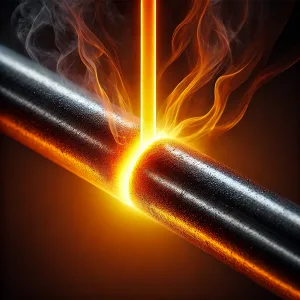Understanding how heat moves around us is essential for many everyday applications, from cooking to heating our homes. This process, known as thermal energy transfer, occurs through three main mechanisms: conduction, convection, and radiation. Let’s break down these concepts in simple terms so you can get a clear picture of how thermal energy transfer works.
What is Thermal Energy Transfer?
Thermal energy transfer is the movement of heat from one place to another. This movement happens because heat always travels from a hotter area to a cooler one. By understanding how this transfer occurs, we can better manage energy in our homes, improve appliances, and even enhance our comfort.
1. Conduction
Definition: Conduction is the transfer of heat through direct contact between materials.
How It Works: Imagine you’re holding a metal spoon that’s been sitting in a hot pot of soup. The heat from the soup travels up the spoon to your hand. This happens because the metal is a good conductor of heat. At a microscopic level, heat causes the atoms in the metal to vibrate, and these vibrations are passed along to adjacent atoms, transferring the thermal energy through the material.
Examples: Cooking on a stovetop is a classic example of conduction. When you heat a pan, the heat from the burner travels through the pan to cook your food. Another example is ironing clothes; the heat from the iron is conducted through the fabric to smooth out wrinkles.
2. Convection
Definition: Convection is the transfer of heat through fluids (liquids and gases) by the movement of the fluid itself.
How It Works: Convection involves the bulk movement of a fluid. When a fluid is heated, it becomes less dense and rises. Cooler fluid then moves in to replace it, creating a convection current. This movement helps distribute heat more evenly throughout the fluid.
Examples: Boiling water is a great example of convection. As the water at the bottom of the pot heats up, it rises to the top, while cooler water moves down to take its place, creating a circulation pattern. In your home, convection is responsible for how heat spreads from radiators or heaters throughout the room.
3. Radiation
Definition: Radiation is the transfer of heat through electromagnetic waves, without needing a physical medium.
How It Works: Unlike conduction and convection, radiation doesn’t require direct contact or a fluid to move through. Instead, heat travels in the form of electromagnetic waves, such as infrared radiation. This is why you can feel the warmth of the sun even though it’s millions of miles away.
Examples: The warmth you feel from the sun or from a fire is due to radiation. When you stand close to a campfire, you feel the heat directly, even though there’s no physical contact with the fire. Similarly, the heat from a light bulb or a toaster is transferred through radiation.
Why Understanding Thermal Energy Transfer Matters
Understanding how thermal energy transfer works helps us in various practical ways. For instance, knowing how heat moves can help us make better choices in energy-efficient home design, cooking techniques, and even in industries where heat management is crucial.
Thermal Energy Transfer Examples: In the home, insulation materials are designed to reduce heat transfer through conduction. Convection currents can be harnessed in cooling systems to distribute cool air efficiently. And in everyday appliances, radiative heating elements provide direct heat for cooking and warming.
In simple terms, thermal energy transfer is all about how heat moves from one place to another. Conduction transfers heat through direct contact, convection uses the movement of fluids, and radiation transfers heat through electromagnetic waves. By grasping these concepts, you’ll better understand and manage the thermal energy in your life, making tasks like cooking and heating more efficient and effective.
